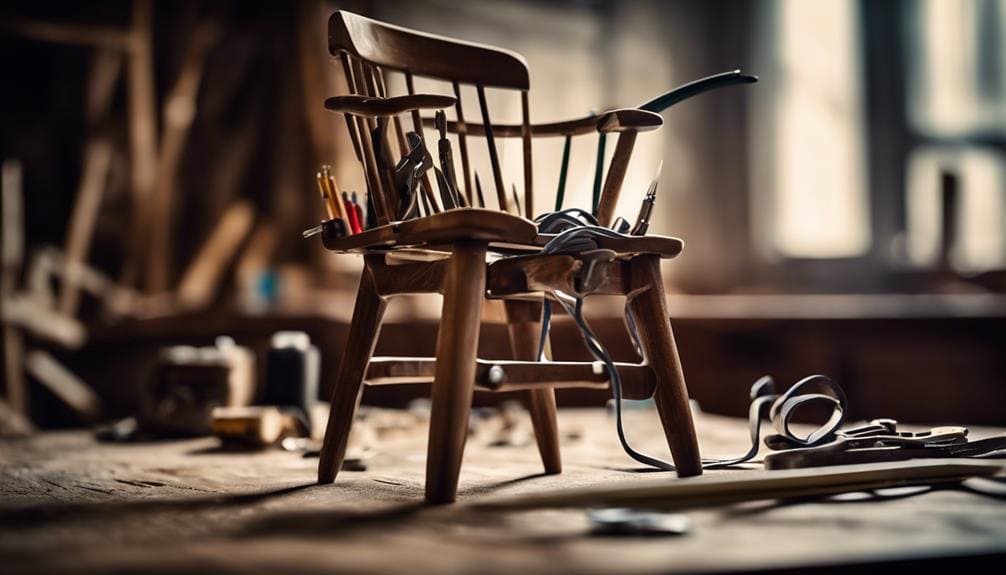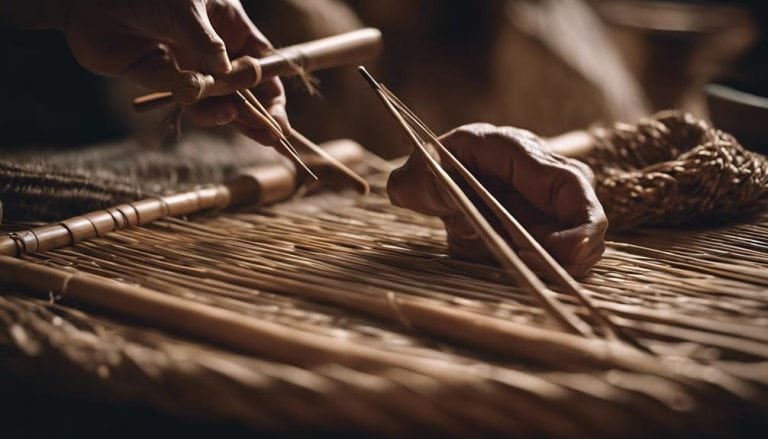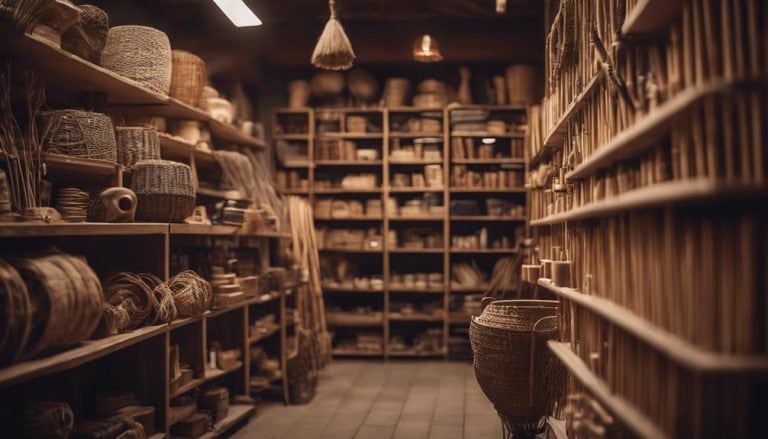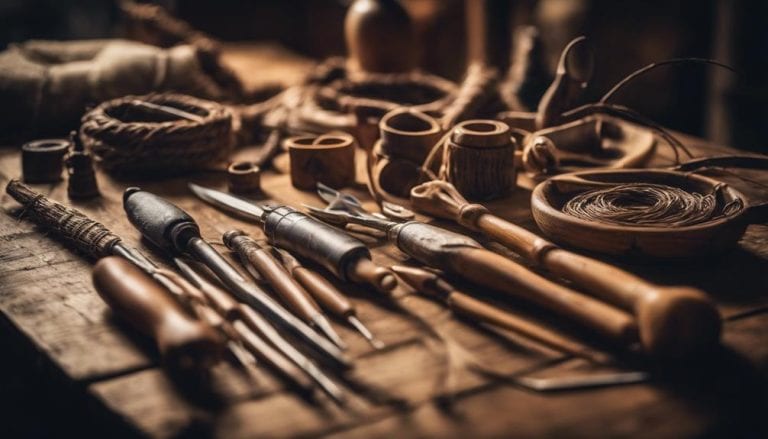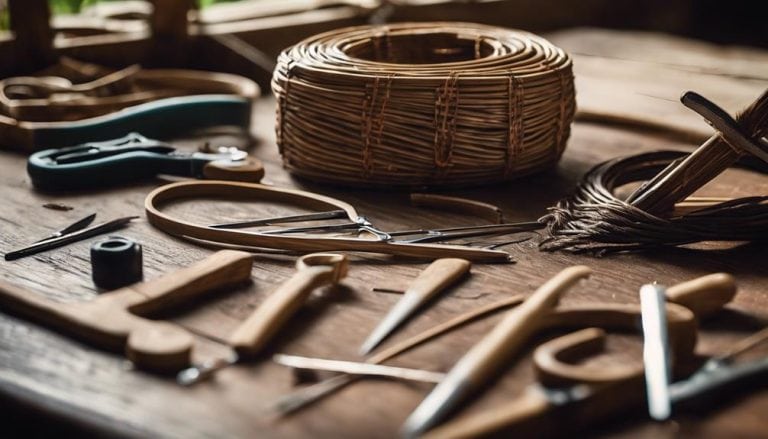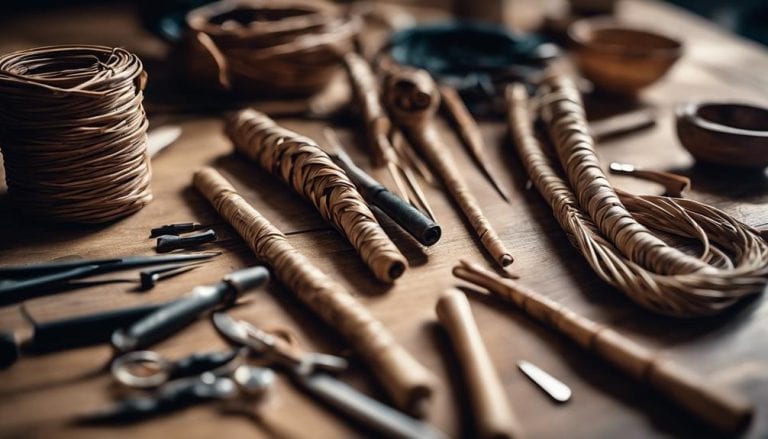Equipment Needed for Danish Cord Weaving
By chance, have you ever wondered what essential tools are required for Danish cord weaving? Well, let me shed light on the fundamental equipment needed to embark on this traditional craft. From specialized scissors to a staple gun, each tool plays a crucial role in the meticulous process of Danish cord weaving. But that's just the beginning. Stay tuned to discover the intricacies of cord material, frame requirements, and finishing touches that will elevate your weaving project to a professional level.
Key Takeaways
- Essential tools like scissors, staple gun, clamps, and gloves are crucial for Danish cord weaving.
- Proper equipment ensures smooth weaving, high-quality results, and protection during the weaving process.
- Tools like cutting pliers help with cord cutting, while clamps maintain tension for an even weave.
- Choosing the right tools is essential for durability, comfort, and the longevity of your Danish cord woven pieces.
Danish Cord
Danish Cord, woven from paper twisted into a three-ply rope, stands as a quintessential material renowned for its strength and longevity in the realm of furniture weaving. The historical significance of Danish cord dates back to mid-century furniture design, where renowned designers like Borge Mogensen and Hans Wegner employed this durable material in their iconic creations. Its modern applications continue to showcase the versatility and timelessness of Danish cord in contemporary furniture pieces.
Caring for Danish cord involves regular maintenance to preserve its integrity. Cleaning with a damp cloth and mild soap can help remove dust and debris, ensuring a longer lifespan for the woven furniture. Weaving techniques play a crucial role in ensuring the strength and durability of Danish cord furniture. Proper tension and weaving patterns are essential to create sturdy and comfortable seating surfaces.
Weaving Tools
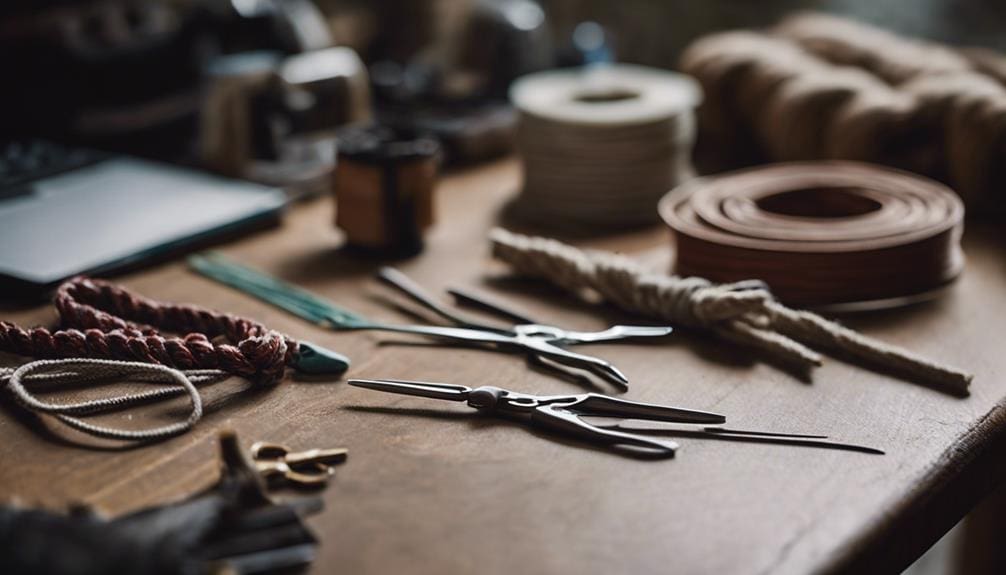
Utilizing essential tools such as scissors, a staple gun, clamps, and gloves is paramount for successful Danish cord weaving projects. Each tool plays a crucial role in ensuring the weaving process is smooth and the final product is of high quality.
- Scissors/Cutting Pliers: These are indispensable for cutting the Danish cord to the required length and trimming any excess cord neatly.
- Staple Gun: A staple gun is essential for securing the cord in place, providing stability as you weave intricate patterns.
- Clamps: Clamps are necessary for holding the cord in place and maintaining tension while weaving, resulting in a uniform and professional finish.
- Gloves: Wearing gloves not only protects your hands from blisters but also provides a better grip on the cord, allowing for more precise weaving techniques.
Cord Material

When selecting cord material for Danish cord weaving projects, it is essential to consider the durability and strength of the material being used. Danish cord, crafted from three twisted paper plies, offers exceptional robustness ideal for weaving chair seats and backrests. Available in 10-lb. or 2-lb. spools, each pound containing around 180 feet of 1/8 inch diameter cord, this material ensures ease of manipulation during the weaving process.
Sourcing Danish cord from reputable cord suppliers is crucial to guarantee quality and authenticity. These suppliers offer a range of options suitable for various weaving techniques, meeting the needs of both beginners and experienced weavers. Understanding the composition and characteristics of Danish cord aids in creating long-lasting and sustainable woven pieces, especially for chair weaving projects. By selecting the right cord material from trusted suppliers, we can embark on Danish cord weaving with confidence, knowing that our creations will stand the test of time.
Needles and Thread
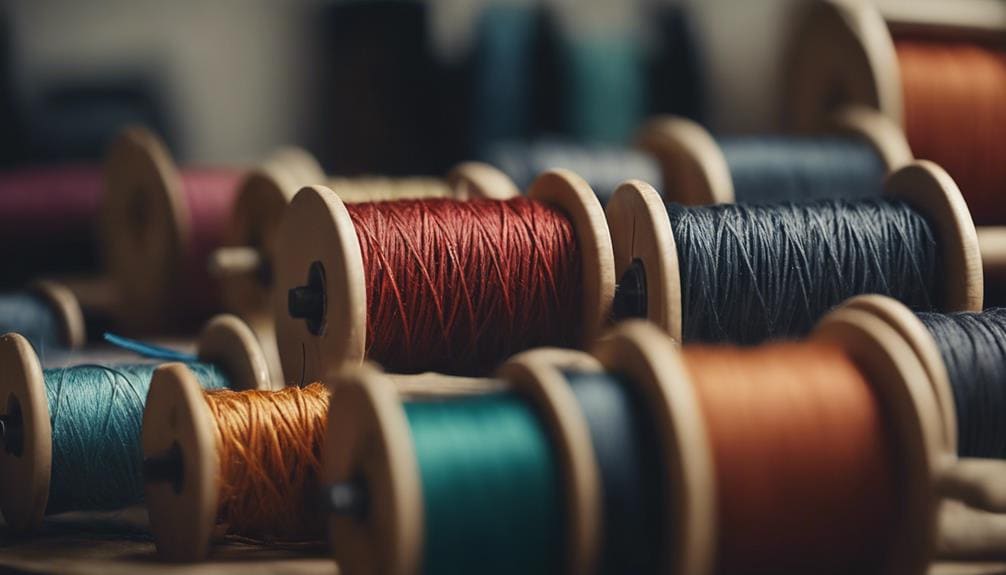
With an eye for craftsmanship and precision, selecting the appropriate needles and thread is paramount in achieving a professional and durable Danish cord weave on chairs.
- Needle size: The right needle size ensures smooth weaving and easy passage through the cord and chair frame.
- Thread tension: Proper tension is vital for a secure weave that will stand the test of time.
- Curvature impact: Curved needles are designed to navigate the intricate patterns of Danish cord weaving, impacting the ease and quality of the final product.
- Material selection: Choosing a strong and durable thread is essential for longevity and resilience in the face of wear and tear.
The art of Danish cord weaving hinges on the details, and the needles and thread are the unsung heroes of this craft. As a seasoned weaver, I can attest to the significance of these seemingly small components in creating a masterpiece that not only captivates the eye but also withstands the trials of everyday use. Choosing the right needles and thread is akin to laying a solid foundation for a towering structure – it ensures stability, endurance, and beauty in every woven strand.
Frame or Chair Base
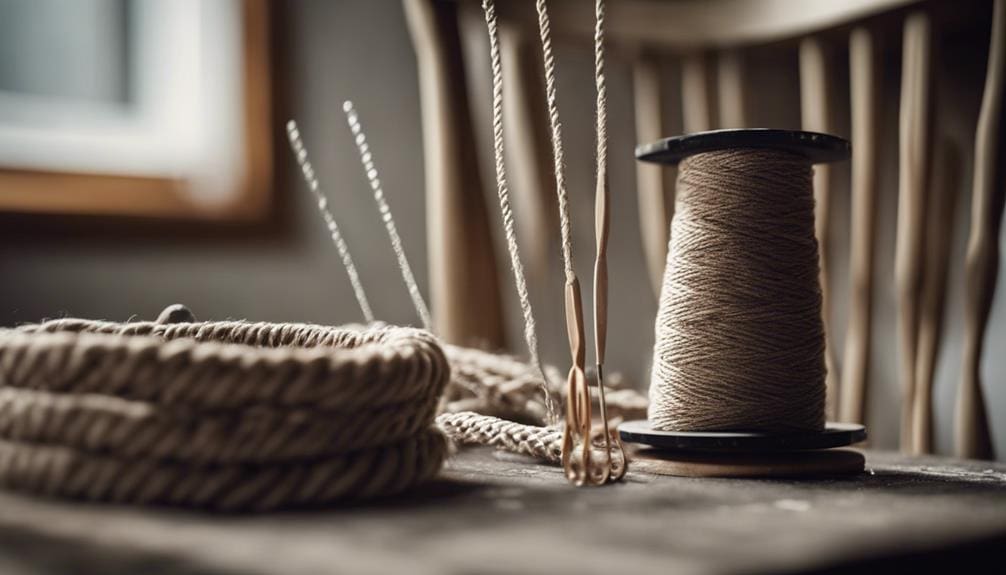
The foundation of any successful Danish cord weaving project lies in the quality and integrity of the frame or chair base. Before embarking on the weaving journey, a thorough frame inspection is paramount. It is essential to ensure that the frame is sturdy and in good condition, as it provides the essential structure and support needed for the weaving techniques involved in Danish cord weaving.
In cases of chair restoration or frame maintenance, attention to detail is key. The design of the frame can significantly impact the final look and feel of the woven piece. Proper preparation and inspection of the frame are crucial steps that cannot be overlooked. By taking the time to assess the frame's condition and making any necessary repairs or reinforcements, you set the stage for a successful weaving experience.
Tensioning Device
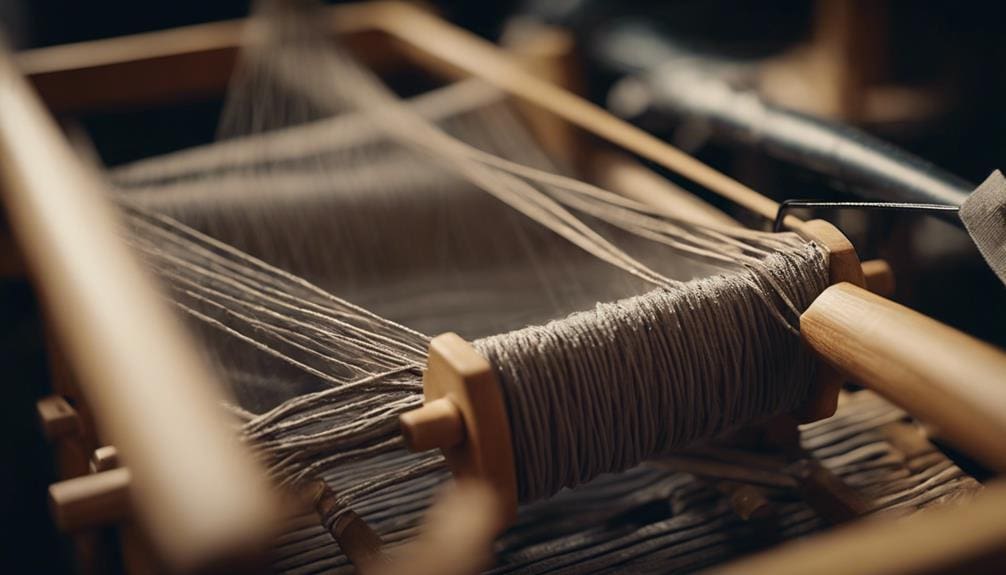
Inspecting the tensioning device thoroughly is crucial for achieving consistent and secure tension while weaving Danish cord. The tensioning device plays a vital role in maintaining the right cord tension, ensuring weaving consistency and efficiency. Here are four essential aspects to consider when utilizing a tensioning device:
- Understanding Tensioning Techniques: Familiarize yourself with different tensioning methods to find the one that best suits your weaving style and preferences.
- Ensuring Cord Tension: Regularly check and adjust the tension to prevent loose weaving, which can affect the overall look and durability of the finished weave.
- Maintaining Weaving Consistency: Consistent tension throughout the weaving process is key to achieving a professional finish and a uniform weave pattern on the chair.
- Choosing the Right Device: Select a tensioning device that complements your weaving setup and helps streamline the weaving process for optimal efficiency and results.
Finishing Tools

When working on Danish cord weaving projects, the proper selection and use of finishing tools are essential for achieving a professional and polished result. Attention to detail is crucial in utilizing these tools effectively. Below is a table outlining some essential finishing tools and their roles in Danish cord weaving:
| Finishing Tools | Description |
|---|---|
| Scissors or Cutting Pliers | Used for cord trimming to achieve neat and clean edges. |
| Staple Gun | Commonly used to secure the cord in place during the weaving process. |
| Clamps | Essential for holding the chair frame or structure steady while working on the weaving. |
| Gloves | Recommended for hand protection against abrasions or splinters. |
Proper maintenance of these tools is necessary for optimal performance. Cord tensioning plays a vital role in the weaving techniques, ensuring an even and tight weave. Understanding the nuances of chair construction is also crucial to applying the finishing tools effectively. Mastering these aspects will contribute to the success of your Danish cord weaving projects.
Frequently Asked Questions
How Do You Do a Danish Cord Weave?
To do a Danish cord weave, I ensure proper tension, master weaving techniques for various patterns and color options. By carefully tacking the cord, maintaining tension, and hiding knots, a secure and beautiful weave emerges.
What Is the Nail Spacing for Danish Cord Weaving?
Maintaining proper nail spacing is crucial for Danish cord weaving. It ensures even tension distribution, stability, and a professional finish. Consistent spacing between nails is key for a uniform and aesthetically pleasing weave.
How Much Danish Cord for One Chair?
For one chair, I've found that approximately 140 meters of Danish cord is necessary. Ensuring accuracy in measuring cord length is crucial for uninterrupted weaving. Different weaving techniques may slightly alter the amount needed.
Which Is Better Laced or Unlaced Danish Cord?
Laced Danish cord weaves like a tale with visible twists, adding texture and character. Unlaced cord offers a sleek, modern touch. Both have their charm; beginners may find unlaced easier, while laced brings depth.
Conclusion
In conclusion, weaving Danish cord is like painting a masterpiece with rope. With the right tools and technique, creating a beautifully woven chair is a rewarding and intricate process. Remember to pay attention to detail, maintain even tension, and secure your cords properly for a finished product that is both functional and visually stunning. Happy weaving!

